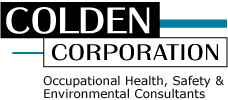Resin acids are terpenoid compounds (diterpenes) found in coniferous tree sap or rosin (also referred to as “pitch” or “colophony”). Rosin is formed by conifer trees and shrubs to protect and preserve wood and bark and is largely composed of a mixture of resin acids from two main classes of carboxylic acids: abietic acids (e.g., abietic acid, dehydroabietic acid, neoabietic acid, palustric acid, levopimaric acid) and pimaric acids (e.g., pimaric acid, isopimaric acid, sandaracopimaric acid). Rosin is widely used in inks and coatings, adhesives, sealants, waxes, plasticizers, and surfactants, applied as a solid to treat stringed instrument bows and ballet pointe shoes, and numerous industrial processes and consumer products. Certain rosins are approved for human consumption as food additives or indirectly in food coverings and closures or adhesives (e.g., cellophane, paper and paperboard components, sealing gaskets).
Resin acids can be encountered in a variety of workplace environments including wood handling, pulping, and papermaking and where rosins, or modified rosins or rosin derivatives, are used as additives, such as in personal care products, cosmetics, and textiles, pesticides, inks and coatings for printing press and bindery operations, as well as rosin-based solder flux. Rosin-based solder flux was the primary flux used in electronics manufacturing prior to the synthetic alternatives now available – it’s still in use for some soldering applications involving copper and brass components, connections, and repairs and may be encountered in electronics waste and recovery operations.
Direct contact with resin acids can lead to skin irritation, dermatitis, and chemical burns depending on the chemical formulation, processing, and nature of dermal contact. Workers using these materials without appropriate personal protective equipment (PPE) may experience redness, itching, or more severe skin reactions.
Smoke and vapors from soldering operations are a major source of resin acid inhalation exposure, which can result in respiratory system irritation and symptoms such as coughing, wheezing, shortness of breath, or exacerbation of pre-existing respiratory conditions like asthma. The American Conference of Governmental Industrial Hygienists (ACGIH) recommends a Threshold Limit Value (TLV) for resin acids of 0.001 mg/m3 (milligrams per cubic meter of air) as an 8-hour time-weighted average, measured as an inhalable aerosol.
Resin acid has been designated as a respiratory and skin sensitizer by the ACGIH, with some individuals developing sensitization leading to allergic reaction(s) upon subsequent exposure. Symptoms can include skin rashes, respiratory distress, or anaphylactic reactions in severe cases. Prolonged exposure to certain resin acids has been linked to toxic effects, including potential impacts on the liver and kidneys, reproductive health, and carcinogenic effects, depending on the specific compounds and exposure levels.
Industrial hygienists and other environmental health and safety (EHS) professionals should implement several strategies to mitigate exposure risks from resin acids, applying the hierarchy of controls:
Substitution: Where possible, explore alternative materials that do not contain harmful resin acids. Synthetic alternatives to rosin (colophony) flux are widely used, especially in electronics manufacturing, to reduce the health risks associated with rosin-based products particularly respiratory and dermal sensitization. Non-colophony synthetic resins do not contain sensitizing abietic acid derivatives. For adhesives and coatings, current manufacturing processes may use synthetic epoxy resins rather than rosin with resin acids.
Engineering Controls: Use local exhaust ventilation and general ventilation systems to reduce airborne concentrations of resin acids and improve indoor air quality. For example, a local exhaust system should be used to remove aerosols created from soldering if using rosin-based flux.
Administrative Controls: Provide workers with training on the hazards associated with resin acids, and safe handling procedures including proper use of workplace controls.
PPE: Ensure that workers wear appropriate PPE, including gloves and eye protection. Respiratory protection may be called for as an interim measure while local exhaust ventilation is installed.
Conduct regular monitoring of workplace operations to ensure dermal contact and inhalation exposure risks for resin acids are properly mitigated to tolerable levels, with industrial hygiene air monitoring and objective data applied as appropriate to verify worker inhalation exposures do not exceed (or approach) the recommended occupational exposure limit.

